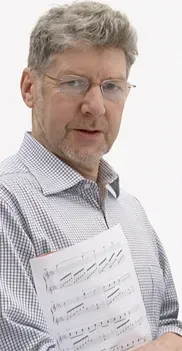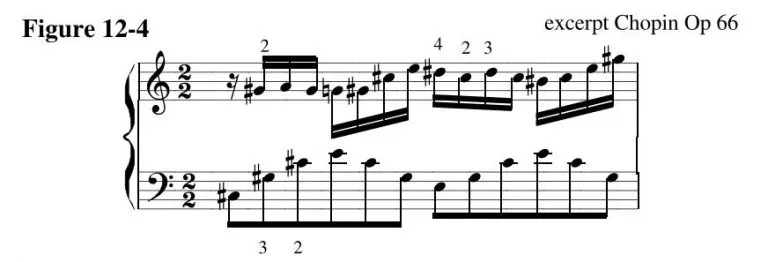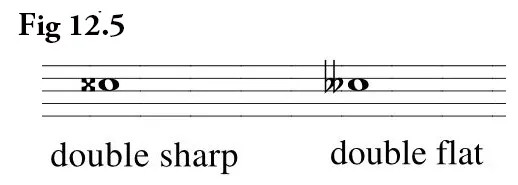John Barton's Music Logic Lessons Online
Module 2 - Lesson 12

HomeWork & Summary
LESSON Twelve
Space for future notes
Space for future notes
Space for future notes
Space for future notes
John Barton's Music Logic Lessons Online
Module 2 - Lesson 12
Videos and excercises below
Please do not share this Link
Video 12.1 Christine’s Song – Secondo
Christine’s Song Secondo
Christine’s song is a duet. First part ( primo ) second part ( secondo ). We learnt the primo in lesson three. The idea is for you to teach the primo to a partner/friend/relation while you play the secondo.
Duets are a challenge and fun at the same time. Each performer needs to know their material really well and then work as a team. Sometimes it’s not as easy as it looks.
The secondo is made up of 8 chords that move in an amazingly simple pattern.Use the left hand ( L.H. ) to play a single note and the right hand ( R.H. ) to play a 3 note chord.

Figure 12-1 shows the 8 notes for the L.H. As you can see the pattern is remarkable as it move constantly “ up a fourth – down a fifth “ etc. Also notice the starting and finishing notes are the same note i.e. jump below C. The idea is to quickly commit these notes to memory.

Figure 12-2 shows the 8 chords for the R.H. exactly follow the pattern of the single note for the L.H. Good idea to think of the L.H. as being the ‘ leader’ with the R.H. following. Now commit both hand to memory.

Figure 12-3 shows that the only accidental in this chord progression is a sharp for the middle note of chord number seven. When you have all of this hands together in a reasonably automatic fashion you are ready to play with a partner.
Title goes here
Video 12.2 Happy Blues Revision
Happy Blues Revision
Happy Blues is more than a fun piece of music. It teaches us some valuable lessons for the future. In fact if you think about it – if you understand the fundamentals of this lesson you can tackle the most complex music. i.e. 1 what is the note ? 2 does is have accidentals ? 3 what fingering should I use ?
or
1 poke the notes
2 add the accidentals
3 add sensible fingers
Example of more complex music
Video 12.3 More Complex Music
Figure 12-4

Figure 12-4 is a typical Chopin notation. You could figure out the notes – then add the accidentals – then try the suggested fingering. Note the B# which is a white key sharp.
In other words – poke the notes – add accidentals – add sensible fingering.
Video 12.4 An example of Chopin Opus 66
Video 12.5 Accidentals
ACCIDENTAL is a great word in music. It is an all encompassing word that covers the five different things you can do to an individual note.
You have already learned two of the things you can do i.e. sharp a note – flat a note.
What if I told you that you can – double sharp a note – double flat a note?
What do you think a double sharp would look like?
You can probably work it out for yourself if you remember the definition of our ‘standard’ sharp i.e.“the very next note up” and then you thought “well a double sharp might be the very next note up twice” then you would be correct.
I think it’s great when you can work out something by yourself because you know how something works.
What do they look like?

In Figure 12-5 you can see that a double sharp looks like an x and the double flat is two flat symbols.

Figure 12-6 shows six C’ in a row
1st note standard
2nd note sharped
3rd note flatted
4th note double sharped
5th note double flatted
6th note standard
In summary – altogether there are 5 accidentals which means you can affect a note 5 different ways .
Video 12.6 Advanced Pedal Use
We will be in touch for the next lesson
keep an eye on your email
John Barton
Music Logic